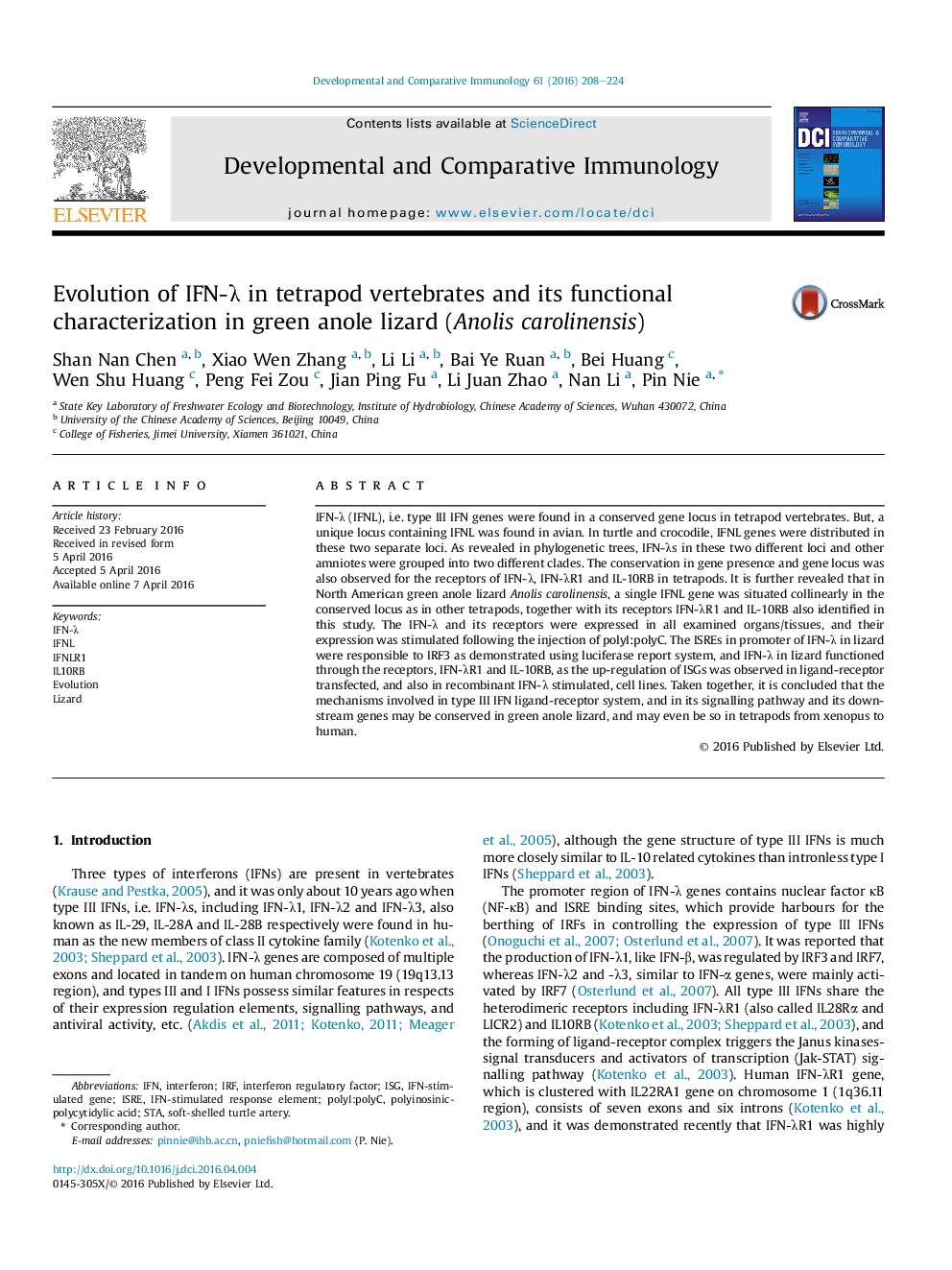| Article ID | Journal | Published Year | Pages | File Type |
|---|---|---|---|---|
| 8497999 | Developmental & Comparative Immunology | 2016 | 17 Pages |
Abstract
IFN-λ (IFNL), i.e. type III IFN genes were found in a conserved gene locus in tetrapod vertebrates. But, a unique locus containing IFNL was found in avian. In turtle and crocodile, IFNL genes were distributed in these two separate loci. As revealed in phylogenetic trees, IFN-λs in these two different loci and other amniotes were grouped into two different clades. The conservation in gene presence and gene locus was also observed for the receptors of IFN-λ, IFN-λR1 and IL-10RB in tetrapods. It is further revealed that in North American green anole lizard Anolis carolinensis, a single IFNL gene was situated collinearly in the conserved locus as in other tetrapods, together with its receptors IFN-λR1 and IL-10RB also identified in this study. The IFN-λ and its receptors were expressed in all examined organs/tissues, and their expression was stimulated following the injection of polyI:polyC. The ISREs in promoter of IFN-λ in lizard were responsible to IRF3 as demonstrated using luciferase report system, and IFN-λ in lizard functioned through the receptors, IFN-λR1 and IL-10RB, as the up-regulation of ISGs was observed in ligand-receptor transfected, and also in recombinant IFN-λ stimulated, cell lines. Taken together, it is concluded that the mechanisms involved in type III IFN ligand-receptor system, and in its signalling pathway and its down-stream genes may be conserved in green anole lizard, and may even be so in tetrapods from xenopus to human.
Keywords
Related Topics
Life Sciences
Biochemistry, Genetics and Molecular Biology
Developmental Biology
Authors
Shan Nan Chen, Xiao Wen Zhang, Li Li, Bai Ye Ruan, Bei Huang, Wen Shu Huang, Peng Fei Zou, Jian Ping Fu, Li Juan Zhao, Nan Li, Pin Nie,
